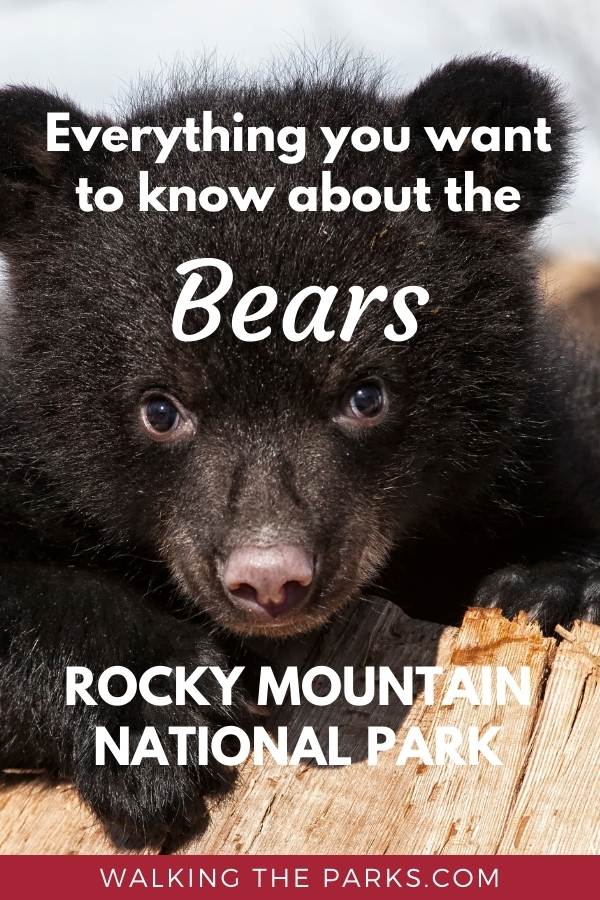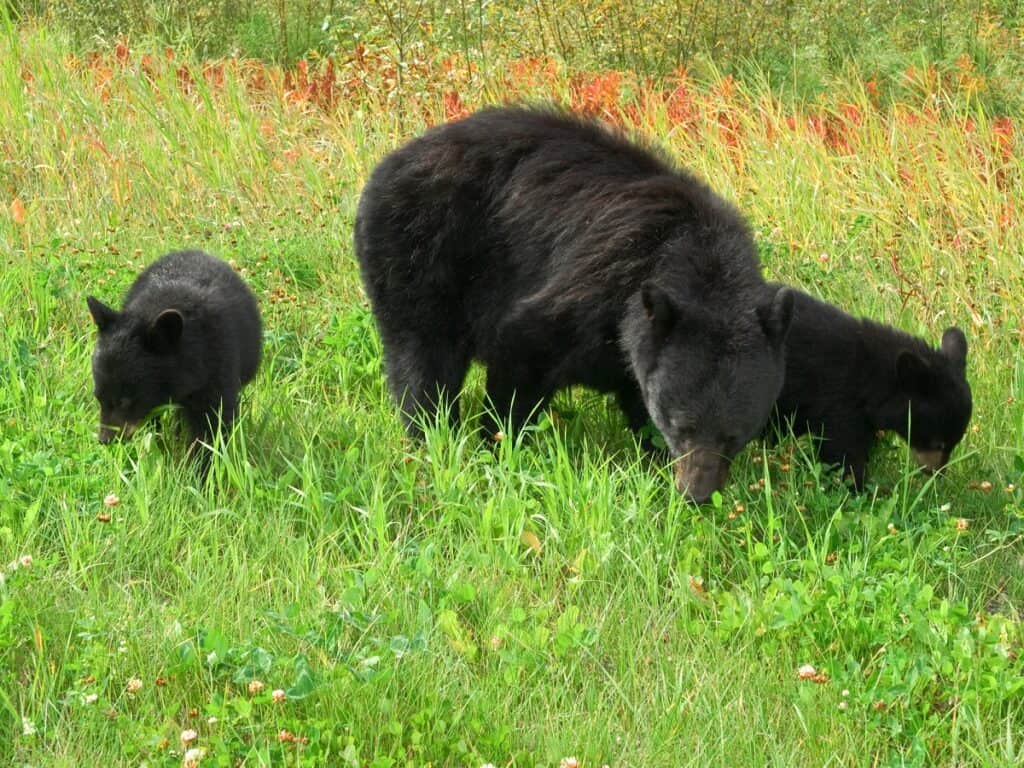Before you go on your vacation, know what to expect from the bears in Rocky Mountain National Park. Are you among the visitors’ excited about the possibility of encountering a bear in the wild? Are you worried and concerned about the dangers of meeting a bear? Or, if you are like me, you have a mix of both wonder and fear!
When visiting Rocky Mountain National Park, you likely want to know where can you see bears? And wondering if you need to be afraid of the bears. Let’s explore some of the facts about bears in RMNP so that you can make an informed decision.
Where to See Black Bears in Rocky Mountain National Park
You probably hope to capture a photo of one of the magnificent black bears (Ursus americanus) during your vacation. Unfortunately, the odds of you seeing a black bear while in Rocky Mountain National Park is slim. Only 20-30 black bears are living in the National Park. To help put that in perspective, Rocky Mountain National Park covers 415 square miles. So that’s about 1 bear per every 20 square miles in RMNP. That’s 1 black bear hiding in a space equivalent to 400 city blocks.
Imagine trying to find a specific person in that space!
Bears in Rocky Mountain National Park tend to be shyer 1 than those you find in other National Park. The number of bear sightings and incidents is small. Tour company Yellow Wood Guiding, which has been conducting tours for years in the park, says they see black bears on less than 2% of their tours.
However, don’t give up hope of obtaining that unique photo or bear encounter story.
While you won’t have much success “looking for” bears, many people do see and photograph black bears. Consider it a gift if you are so lucky.
Our black bear encounters in RMNP have been incredibly random and unplanned. Once a bear wandered through our campground at night looking for free food. Another time, we met a fellow hiker on the trail who had encountered a bear just around the curve. However, Miss Bear was long gone by the time we arrived.
Black bears are most frequently sighted in the spring as they come out of hibernation. And then again in August and early September when they search for more food to bulk up for winter. They are most active during the morning and evening twilight hours.
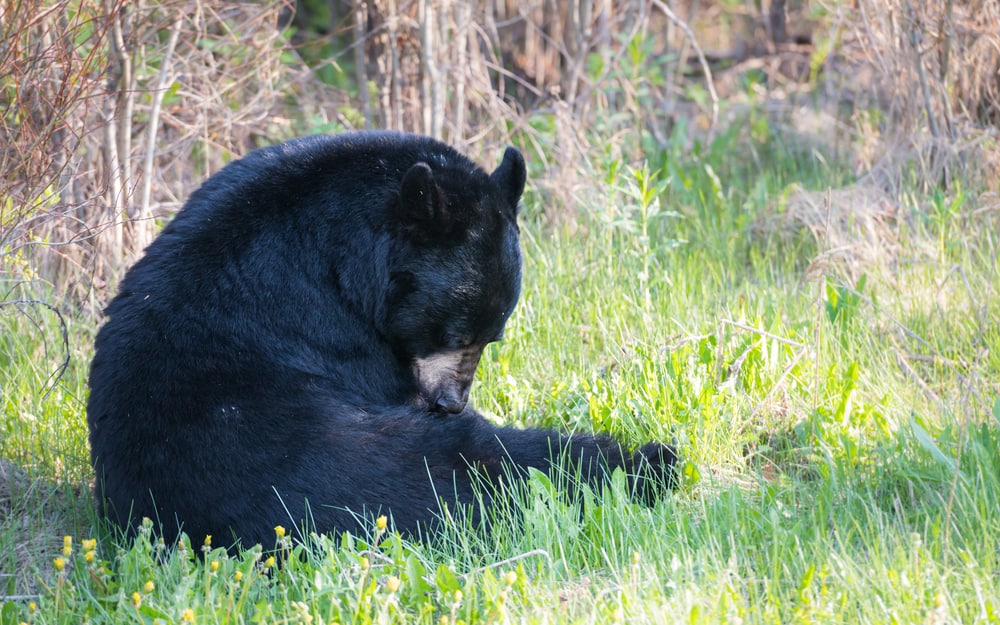
What Type of Bears Live in Rocky Mountain National Park?
Only black bears live in Colorado. The more aggressive and fearsome Grizzly Bear is no longer found in the state. Also, black bears in Rocky Mountain National Park are not always black. Their fur can also be various shades of brown.
What to Do If You Encounter a Bear While Hiking or Camping
Black bears generally have little interest in humans. If they are aware that you are around will usually try to move away from you. To avoid a surprise encounter, make noise while hiking. Singing and chatting with your co-hikers is a great deterrent.
However, most hiking trails follow the path of least resistance, such as along a stream or following a ridge. Bears also find that trail the easiest route to get around. Usually, he will scurry off into the brush before you arrive if he hears you coming. Still, you may round the bend on a hiking trail and surprise a black bear.
The smell of food may be enough for a black bear to overcome his desire to avoid humans. That’s why you’ll hear more reports of bear sightings in campgrounds than anywhere else in Rocky Mountain National Park.
Don’t Let the Planning Overwhelm You!
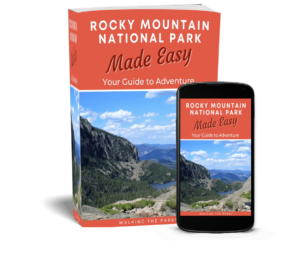
Plan your perfect trip to Rocky Mountain National Park!
Check out our complete digital Guide to Rocky Mountain National Park. This is written specifically for the first time visitor to make your trip planning easy! Over 90 pages of things to do and see on your adventure. Plus get pro tips for planning your adventure.
Start planning immediately with Digital Download!
Observing and Photographing a Black Bear
If you are lucky enough to see a bear, the most important is to keep your distance. The park service recommends staying at least 120 feet from a bear. Why? A black bear can run up to 35 mph 3 which is as fast as a horse. So he can cover the ground between you quickly!
Use your camera’s zoom or zoom lens for the best pictures. And use lightweight binoculars or a spotting scope to watch the bear. When watching a bear along the road, stay in your car. Feel free to observe her safely through the windows.
NPS Safety Advice if You Meet a Bear
According to the National Park Service 4, if you meet a black bear while hiking or at your campsite, you should take the following action.
- Do not approach the bear.
- Keep children beside you, picking up small children.
- Stand tall, remain calm,
- If the bear approaches make loud noises such as shouting, clapping hands, clanging pots and pans, etc.
- Do not try to take anything away from the bear.
- Never get between a mama bear and her cubs. If you find yourself in that position, slowly back away perpendicular so the mama can get to her cubs without going through you.
What if a Bear Attacks You?
Park rangers advise that if a black bear attacks you – fight back. An attack by a bear is unlikely, but it’s important for you to always be aware of our surroundings when hiking.
And make sure you report any bear incident to the park rangers. By keeping track of black bear and human interactions, park rangers can better monitor and take action if a bear is frequently approaching human areas.
Use Noise to Scare Away Black Bears
Air Horn – If we are going on an extended hike that will take us away from crowds, we usually carry a small air horn. It fits right in the water bottle pocket of your pack. And we always sleep with it in our tent. Brad successfully scared off grizzly bears with it when camping near Yellowstone. It’s that obnoxious!
Coaches Whistle – Hook a coach’s whistle onto the shoulder straps of your backpack, where it’s easy to reach all the time. For kids, have them wear one as a necklace. When hiking with kids, a whistle will also serve as a way to get help if they get separated from you.
Car Alarm – During one camping trip in Rocky Mountain National Park, the rangers warned that a black bear had been active in the campground. They suggested keeping your car keys handy, so you could set off the car alarm if the bear came into your campsite. Yes, another obnoxious sound.
Do You Need Bear Spray in Rocky Mountain National Park?
It’s generally believed that it’s unnecessary to carry bear spray in black bear country. They are easy to scare off with loud noises. Without a doubt, you wouldn’t travel into the grizzly bear country of Glacier National Park without bear spray.
Some National Parks with only a black bear population, like Yosemite, don’t allow you to carry bear spray. There is no rule about it in RMNP. Our recommendation is to do what you are most comfortable with when it comes to carrying bear spray.
How to Avoid Black Bears
Brad is always a little disappointed when we don’t see a bear in National Parks. But for me… I’m quite happy never to see one up close. Whichever camp you fall in, there are still things you need to do in bear country.
I’m sure you’ve heard the saying that a fed bear is a dead bear. That’s because if bears get used to being around humans and rely on human food, then the potential that they become dangerous increases. So don’t be that person that abets bad bear behavior!
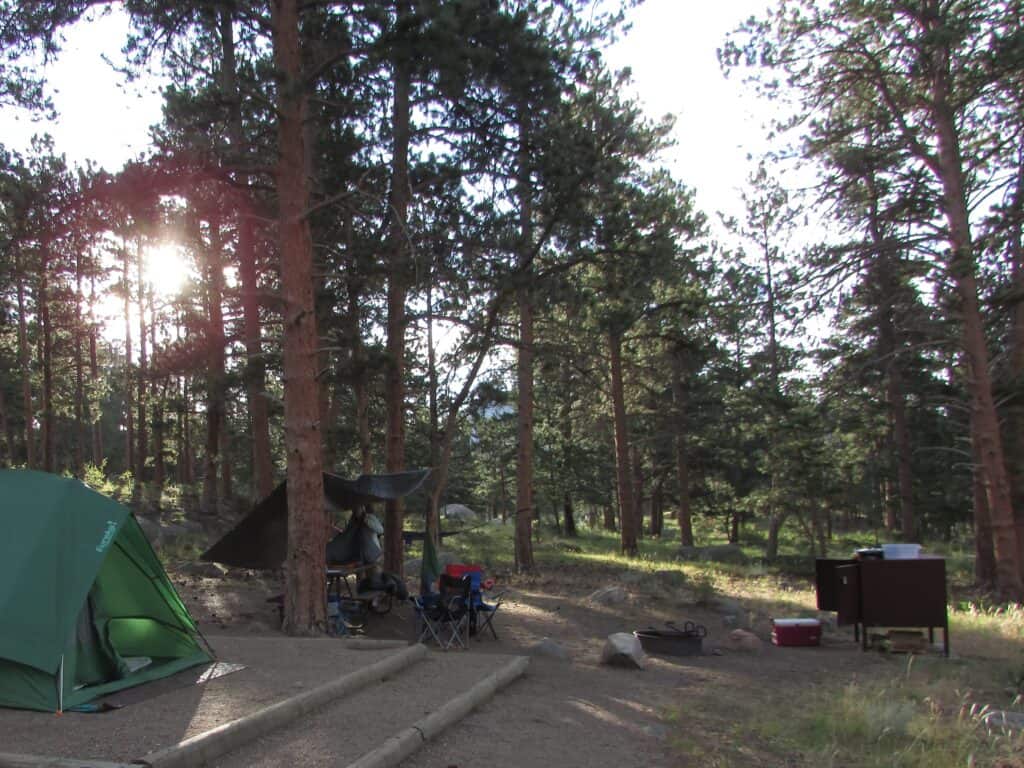
Keep a Clean Camp
I’m obsessive about keeping a clean campsite. It not only keeps bears safely away, but squirrels, raccoons, and other critters can do a lot of damage if they start using the campground for their nightly buffet.
- Wash the picnic table when done eating.
- Put all trash in the bear-proof trash cans before you go to bed.
- Store food in your locked car or the bear boxes. (Yes, black bears can get into unlocked vehicles – we’ve seen it happen!)
- Scented toiletries also need to be secured inside the bear box. Bears don’t know the difference between floral-scented shampoo and flowers!
- Don’t leave your pet’s food items out.
- If backcountry camping, store food in bear canisters.
Black bears have a keen sense of smell; conservative estimates indicate they can smell food from at least a mile away 5. So don’t even think about hiding your food inside your tent. They will know it’s there!
Be Noisy when Hiking
When hiking, the best thing you can do is to avoid surprising a bear by making noise as you move along the trail. If the bear knows you are coming, she will move away from you. No need for you to do anything!
Conversation with your fellow hikers is the easiest. Or you can sing a song as you go. Brad and I always joke that the best defense against bears is to hike with children, inquisitive in nature, who will ask a lot of questions to keep the conversation going. Many people swear by bear bells, but most don’t make enough noise.
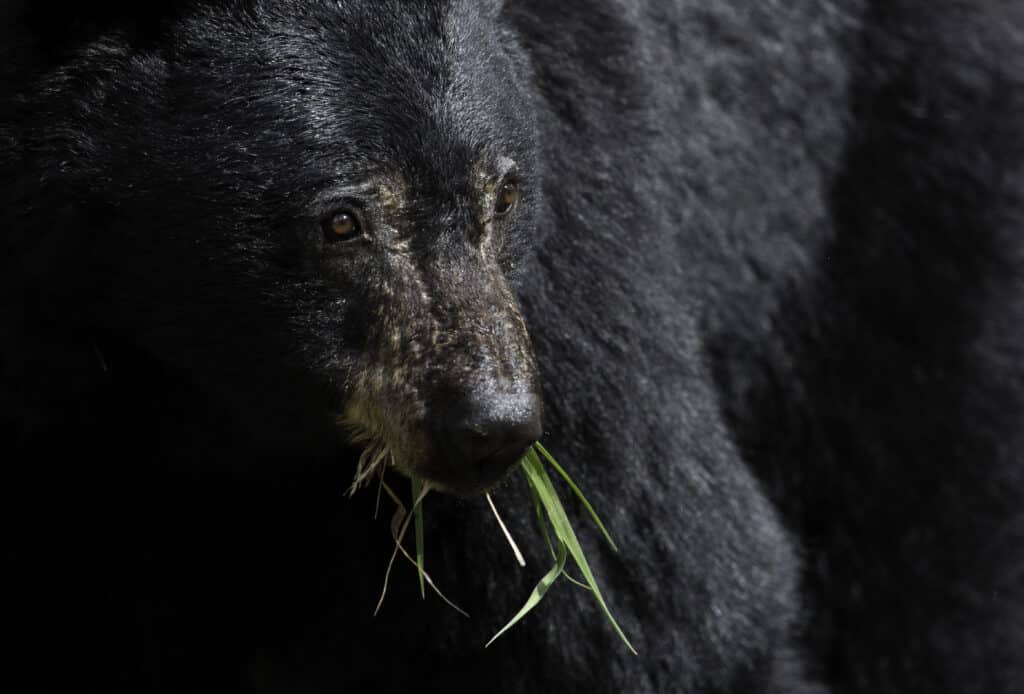
What Do Bears Eat in Rocky Mountain National Park?
Black bears will eat anything. They are opportunistic, eating what is easiest to find. Bears are omnivorous, meaning they eat both plants and animals. The majority of their diet (about 90 percent) is roots, berries, nuts and insects. They will also eat small animals, fish, and dead animals.
Because black bears prefer to stay away from humans, they generally don’t try to eat human food and garbage. But being opportunistic creatures, if they find human food readily available, they can get used to it as their primary food source.
Over the last 20 years, there has been a 15X increase in black bears eating human food 7. As the number of humans visiting has dramatically increased, so has the ease of access to garbage. So it is essential to be aware of your surroundings and keep your food out of reach.
That’s what happened to the family of bears we encountered in the Moraine Park campground. A mama and her cubs started visiting the campground at night for dinner. Mama learned how to open car doors to leisurely go through coolers while everyone slept. Several car interiors were shredded before the park rangers relocated her and her young family.
What Happens to Black Bears that Habituate
Habituation means that a bear makes a habit of searching for human food. It can be at campsites or in garbage cans.
First, it’s not healthy for a bear to veer from the food it naturally finds in the wild. And second, once a bear finds that easy and lazy source of food, it will keep coming back. It might only be a nuisance. But she might get aggressive in her search for an easy dinner.
When a bear is habituated, rangers have to take action to keep both the bear and the visitors safe. First, they try to frighten the bear away by shooting it with rubber bullets, tennis balls or bean bags. In most cases, a bear can be trained to avoid humans if this bad behavior is caught early in their life.
If re-training fails, they will sedate the bear and relocate it further away from people. And if that fails, they might have to destroy the bear. So the best way to avoid bear problems is to be proactive and securely store your food!
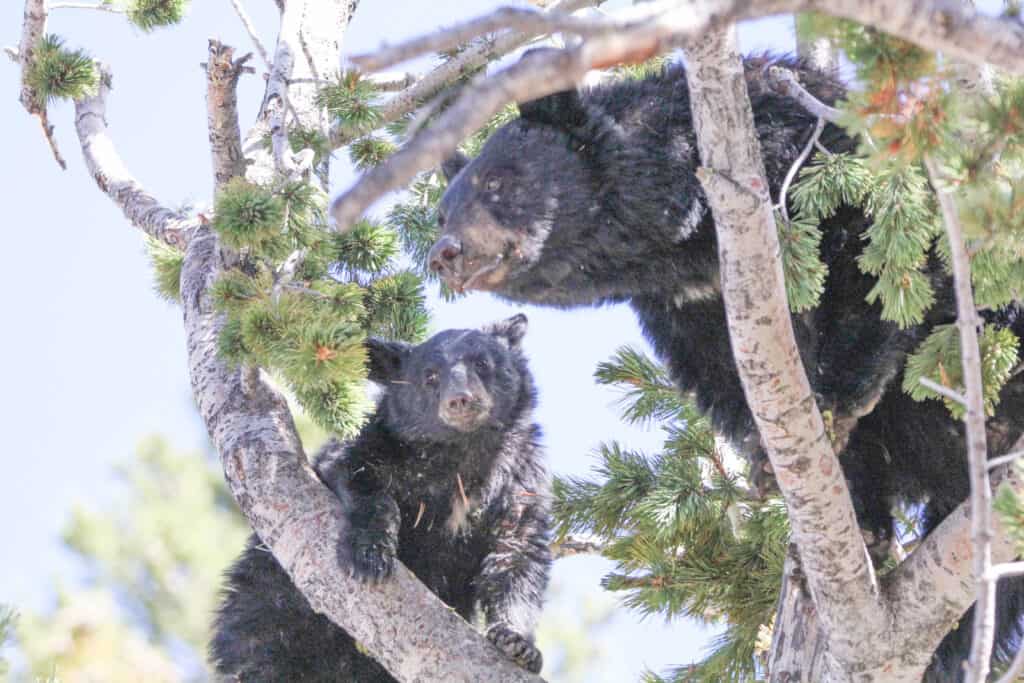
About the Black Bears in Rocky Mountain National Park
The black bears in RMNP tend to be 1/3 to 1/2 smaller than those living in other parts of Colorado. Females average about 120 pounds and adult males 175 pounds.
Rocky Mountain National Park is not the ideal home for bears. The natural foods they prefer are not abundant, and most of the park is not the environment they like. It’s theorized that the black bears in Rocky Mountain National Park are smaller and fewer because the park attracts those who are less able to defend themselves outside the park.
That doesn’t mean the bears are stressed in Rocky Mountain National Park. They tend to live a healthy life, some up to 30 years, with an average of 20 years.
What Do the Bears Look Like (scat and footprints)
While many of the black bears in RMNP are black, some are dark brown and cinnamon-colored.
You Might See Black Bear Scat
Scat is the word for poop in the animal world. As you hike, you might encounter a pile of bear scat on the trail. Bear scat reflects what the bear has been eating that day. In spring, before berries are ripe, it might be mostly vegetation. As summer progresses, you will see berry remains. What makes bear scat stand out is the size of the droppings, which are usually 1/2 to 1 pound 6.
If the droppings appear “fresh”, it’s probably a good time to start singing and let the bear know you are around.
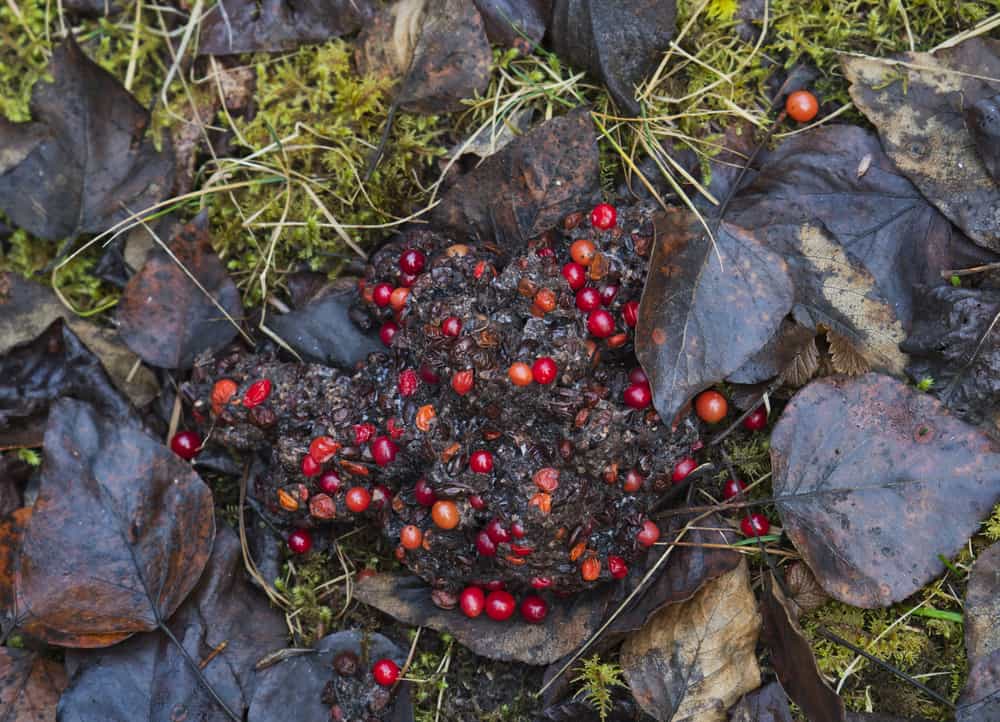
Bear Tracks in RMNP
Watch for bear tracks in muddy areas after rain. You’ll likely recognize it right away. While bears have 5 toes, it’s common for their track only to pick up the 4 larger toes.
Mating Season
Females start mating around 5 years of age and then have a 2-year cycle 8. They are a little unusual in that they breed in June or early July, but the egg doesn’t implant until late fall. This delay allows her to use the summer to bulk up for her winter denning and be the healthiest to support her cubs.
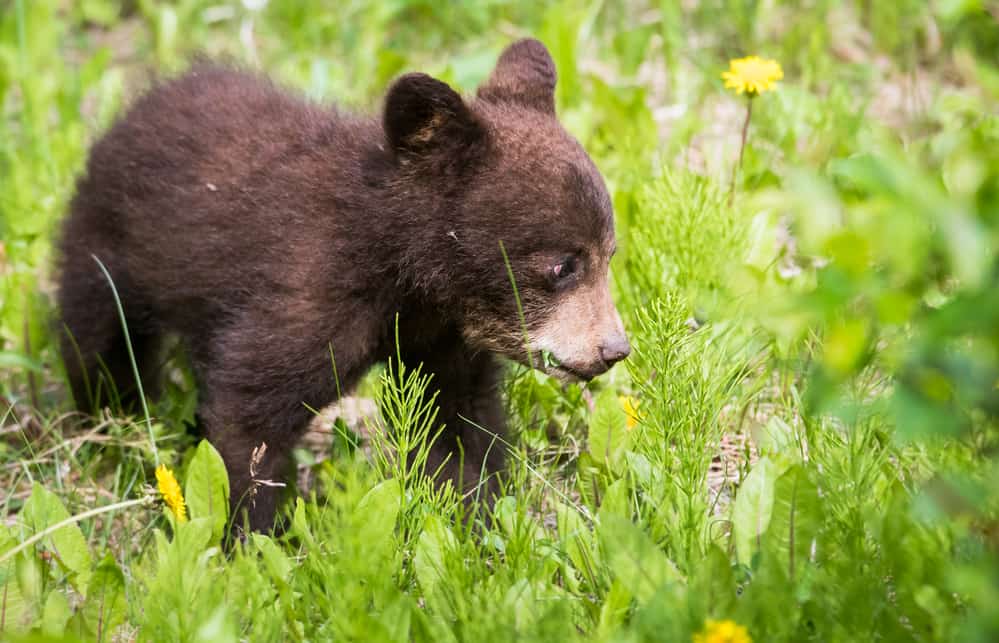
Cubs
Black bears usually have 2-3 cubs born in January or February while the female is hibernating. The newborn cubs are tiny, less than a pound. They spend the rest of the winter snuggled under their mother, nursing and growing.
During this time, the mama bear is not truly hibernating. She keeps her cubs clean and makes sure they are staying warm. The cubs will stay with their mother until they are about 18 months old, and then they strike out on their own.
Hibernating
Bears don’t truly hibernate. If they did, they would be unaware of their surroundings most of the winter. Instead, black bears go through denning. They go into a sleep that reduces their metabolism so their body fat will last longer. However, they can quickly become fully alert if they sense any danger.
This denning behavior allows the mother bear to care for her newborn cubs. She will wake to check on them and keep the den clean.
In Rocky Mountain National Park, black bears prefer to den on steep Northern or Eastern slopes. Here they feel the safest. Other wildlife and humans would have difficulty getting to their dens.
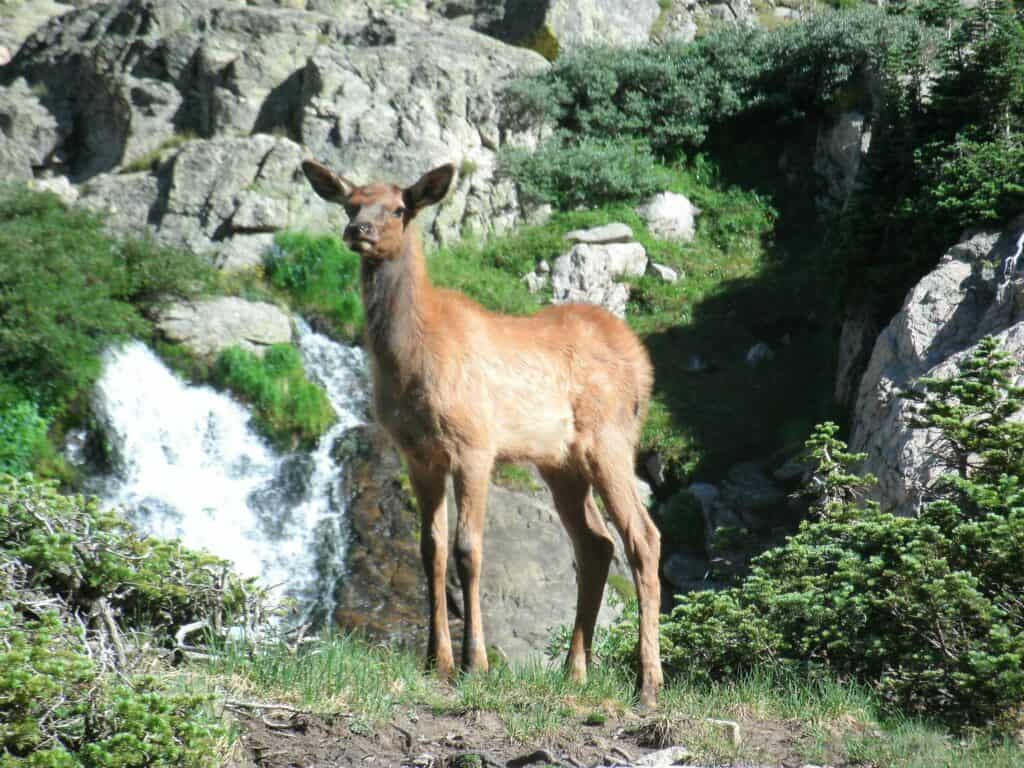
Wildlife You Might See in Rocky Mountain National Park
Although it’s rare to see a bear in Rocky Mountain National Park, there is still plenty of wildlife for you to see.
- In the spring bighorn sheep come down from the mountains and you can find them near Sheeps Lake.
- Elk and moose are frequently spotted in the Kawuneeche Valley on the west side and in big meadows along Trail Ridge Road. Rocky Mountain National Park Elk are the busiest in the fall during the rut when you can hear their distinct bugling call. The moose in RMNP prefer the wetter areas where they can eat willows.
- Small mammals, like mule deer, marmots, pika and squirrels are abundant on forest hiking trails. It’s near impossible foryou to not see these active critters.
The one other animal you probably will never see is the mountain lion. Mountain lions are experts at staying out of sight of people.
Things to Know When Visiting Rocky Mountain National Park
Rocky Mountain National Park is open all year round, although you won’t see bears during the winter months. During the peak season a timed entry pass is required to keep the park from being overcrowded, so make sure you plan ahead for your visit.
You’ll find a lot of ideas and tips for visiting Rocky Mountain National Park in these guides:
- One Day in Rocky Mountain National Park – An Itinerary for Adventure
- Things to Do in Rocky Mountain National Park for the First Time Visitor
- Fall in Rocky Mountain National Park
- Guide to Trail Ridge Road
A Few Last Thoughts
If you’re lucky enough to spot a black bear, be sure to take some pictures and enjoy the sighting!
Just remember that these bears are wild animals and should always be treated with caution. Keep your distance and never try to feed them. It’s important to remember that feeding black bears can make them more aggressive and endanger both people and bears.
The bears in Rocky Mountain National Park are to be treasured. We hope you have a great trip and see lots of wildlife!
Sources:
1 Cryptic Behaviour of Black Bears in Rocky Mountain National Park, Colorado. Henry E. McCutchen, 02/01/09
2 Yellow Wood Guiding, Wildlife Chances On A Wildlife Tour
3 5 Myths about Bears, National Wildlife Federation
4 Rocky Mountain National Park Wildlife Safety
5 A Bear’s Sense of Smell
6 North America Bear Center – Scat/Droppings
7 Bears of Rocky Mountain National Park Video
8 Bears – Rocky Mountain National Park Service
